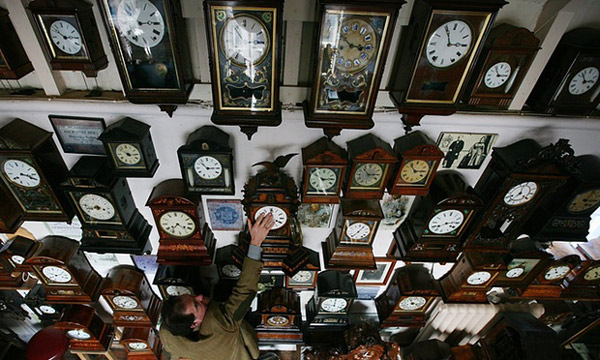Explaining why the clock pendulum shook at the same rhythm
Physicists have officially answered the 350-year-old conundrum that energy can be transmitted through sound pulses in the air.
Scientists explain why the clock pendulum shakes at the same pace
Nearly 350 years ago, Dutch scientist & inventor Christiaan Huygens observed and realized that when placing two pendulum clocks near each other, after a period of time, two pendulum would shake at the same pace. .

In 1665, by chance, scientists observed and found that two pendulum clocks have a similar structure when hung on a wall close to each other, with pendulum shaking in the same direction in the opposite direction, that is, if The clock's pendulum on the left is crossing the left, the clock on the right will turn right, they are in sync with each other strangely and accurately. At that time, they only determined the speed, the rhythm of the pendulum depends by its length.
That phenomenon caused scientists to turn off in the last 3.5 centuries and until today, a report in Scientific Reports of two scientists in Portugal gave the answer to That question: the pendulum "transmits" energy to each other through sound pulses. The energy waves traveling through the air from one clock (pendulum) to the other, over time will cause the previous pendulum to staggered to become "in sync" and become shaken at the same pace. together.
To prove that hypothesis, two scientists developed a complex mathematical model on a computer before conducting a practical experiment with two pendulum clocks hanging close together on the wall. The results are consistent with the hypothesis: "We can verify that the transmission of energy by sound pulses is real," said Luis Melo, professor of physics, working at the University of Lisbon.
The experimental results of Luis Melo and colleagues not only answered a difficult problem posed by Huygens, but also increased human understanding of the type of oscillators. In the middle of the 17th century, Christiaan Huygens was known for his ability to craft handcrafted super-accurate pendulum clocks, with errors less than 1 minute a day, later improving the number to only less than 10 seconds.
- The new clock corrects the timing
- Find out the secret of the biological clock
- Detecting the biological clock 'adjustment button' of the human body
- Mysterious biological clock hidden in tiny molecules
- Why do mice die earlier than people? New discovery of a biological clock
- Why do clock pendulum always swing in the opposite direction when placed side by side?
- How does plants regulate circadian rhythms?
- What is the accuracy of the clock, and is anyone really interested in it?
- Application for people with biological clock disturbance
- The inventions help see the time before the clock
- Eye shields reset the circadian rhythm in the body, improving sleep
- Alarm clock history
 'Fine laughs' - Scary and painful torture in ancient times
'Fine laughs' - Scary and painful torture in ancient times The sequence of numbers 142857 of the Egyptian pyramids is known as the strangest number in the world - Why?
The sequence of numbers 142857 of the Egyptian pyramids is known as the strangest number in the world - Why? History of the iron
History of the iron What is alum?
What is alum? Excalibur Quatuor - The most expensive watch in the world
Excalibur Quatuor - The most expensive watch in the world  Why do clock pendulum always swing in the opposite direction when placed side by side?
Why do clock pendulum always swing in the opposite direction when placed side by side?  Newton's second law is tested correctly
Newton's second law is tested correctly 